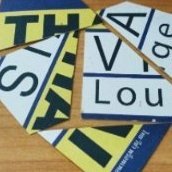AirAsia flight QZ8501 from Indonesia to Singapore missing
-
Recently Browsing 0 members
- No registered users viewing this page.
-
Topics
-
-
Popular Contributors
-
-
Latest posts...
-
28
Politics Thai Politicians Allegedly Hold Secret Bank Accounts in Cambodia
2 - 3% for a US dollar fixed deposit account. -
33
Health Rising HIV Cases Among Thai Youth Prompt New Health Initiatives
There is no such a thing as a HIV virus. It refers to when ones immunity is weak and can't fight further poisons in the system. Weak immunity is caused by: Sugar junk food pharma drugs recreation drugs Lack of detoxing, thus causing bio accumulation. But most immunity destruction is caused by both drugs , rec and pharma types which hammer it all in, as both are very toxic. And overload on toxicity floods immune function. Then the person can't detox. Detoxing can be done with clay, colloidal silver and chlorine dioxide (MMS) and recover one fast of so many so called "incurables". -
9
Crime Man Beaten to Death by Nephew & Friends After Confrontation Over Cannabis Use
You miss or ignore the point that it could've been anything. These youths have control issues. The only control issues dope has is an inability to resist the munchies IMHO. -
199
What sort of personality traits do you need to marry a bargirl?
I assume most women over 20 have been shagged 100s of times. But that's not true for men, I've met men in their 60s that have only been shagged a few times. -
9
Crime Man Beaten to Death by Nephew & Friends After Confrontation Over Cannabis Use
And the ignorant on this forum. This is just another example of self control issues. -
199
What sort of personality traits do you need to marry a bargirl?
It would depend if you were getting any sex in your marriage. Back in the UK I provided a lot, and got no sex. In Thailand I provide a little, and get a lot of sex. So I'm not really sure what the answer is.
-
-
Popular in The Pub













Recommended Posts